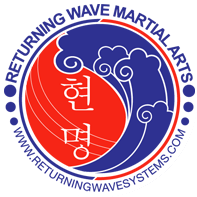Sat, 27 Oct 2007 21:51:56
by Richard Conceicao
Hello Everyone
Having received complaints in the past about attending workshops and not mentioning what occurred in them; I am going to give a brief description of what was covered in today’s Ian Waite ( http://www.go2ianwaite.com/home.html seminar. J.S. Please feel free to add to this with anything that seemed important to you.
We started off with a series of rolling stretches to build spinal flexibility. These were developed by the Russians for their Olympic teams and Special Forces. They include letting the body breathe naturally, something especially useful for grappling.
We then took a look at the notion of “speed” by breaking it down into three basic components:
- How to make myself faster.
- How to perceive the initiation of an opponents technique faster.
- How to cover the distance between us faster.
To do this we began with a number of drills to utilize the “startle” reflex, i.e.. We move very quickly and the adrenaline pumps us up very fast when we are startled. The idea was to recapture this capability and use it to further our goals. First we stimulated it audibly with a loud noise, then we did it with tactile initiation, and finally tried to bring it on by ourselves. This “twitch response” (really a small waveform) formed the basis of what came next.
Our next process was a series of exercises to increase our ability to see the initiation of the attack. We began with very large motions (attacks), and then gradually made them smaller and smaller. After a while everyone was able to gauge from the slightest movement of the body or eye change when the person was going to “pop off”. As an extension of this the attacker was asked to imagine something that made them very angry and then attack. The defender would try to read the emotional change and say “now” before the attack came. The attacker would provide feedback as to how close the defender came. Again, it is remarkable how increasingly accurate you can get.
We then moved into drills that got us to close the distance faster by utilizing footwork in combination with reflexive hand/arm placement that prevented the opponent from using his depth perception. He couldn’t gauge the arms distance so could not actively defend against it.
Taking all of the above we then changed the goals of the engagement from trading punches to destabilizing the opponents base for a split second and then controlling his arms and blocking any centerline attack. This was a basic goal of Bruce Lee’s TKD, but it was an oral instruction, not found in his books. It is the reason he held his fists in that particular structure.
Finally, his wife Paula, give a brief presentation on applied kinesiology.
To demonstrate that the words we say and the thoughts that we have change our body, everybody held out their arm while the partner tested it’s strength. The tester then told them that were weak three times, and the individual said “yes! I am weak! The same three times. Sure enough, their arms dropped like wet noodles. The procedure was then reversed, “you are really strong!”. Everyone’s arm stayed up.
She then took four objects wrapped in paper so you couldn’t tell what they were. You would stick your arm out as before, and hold the object against your chest with the other hand. Depending on what object you had (I volunteered, so this is first hand experience) your arm would stay strong, or get weak.
As it turns out, two of the objects were a kiwi, and a pear. With these all the arms stayed up. The surprise, a cell phone, and packets of aspartame (NutraSweet), they made all the arms weak!
She mentioned that in England it is against the law to buy a cell phone for any child below the age of 11, as it is deemed to dangerous.
So then, this is the kinds of things that go on in these various seminars. I will be posting the upcoming shortly. Please try to make whichever ones you can.
Richard
